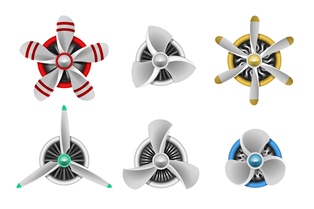Kitchen exhaust fans play a crucial role in maintaining a healthy and comfortable environment in our homes, especially in regions like Kerala where cooking is an integral part of daily life. However, choosing the right size of the exhaust fan can be a daunting task, given the diverse cooking practices and kitchen layouts. In this article, we delve into the intricacies of the kitchen exhaust fan size chart in Kerala, helping you make informed decisions to enhance ventilation efficiency and air quality in your kitchen.

1. Understanding the Importance of Proper Ventilation:
Effective ventilation is essential for removing cooking odors, steam, grease, and pollutants generated during culinary activities. Inadequate ventilation can lead to the accumulation of indoor air pollutants, compromising the air quality and potentially impacting the health of occupants. Moreover, poor ventilation may contribute to the formation of mold and mildew, leading to structural damage over time. Therefore, investing in the right size of the kitchen exhaust fan is crucial for maintaining a clean, healthy, and comfortable indoor environment.
2. Factors Influencing Kitchen Exhaust Fan Size:
Several factors influence the selection of the appropriate size for a kitchen exhaust fan:
Kitchen Size:

The size of the kitchen directly impacts the ventilation requirements. Larger kitchens require more powerful exhaust fans to effectively remove cooking byproducts.
Cooking Habits:
The frequency and intensity of cooking activities influence the volume of pollutants generated. Heavy cooking, such as frying and grilling, demands a robust ventilation system.
Duct Length and Configuration:
The length and complexity of the ductwork affect the airflow resistance. Longer ducts and intricate configurations may require higher-powered exhaust fans to maintain optimal airflow.
Building Regulations:
Compliance with local building codes and regulations is essential when installing kitchen exhaust systems. These regulations often specify minimum airflow rates based on factors such as kitchen size and appliance type.

3. Interpreting the Kitchen Exhaust Fan Size Chart:
| Kitchen Area (Square Feet) | Recommended Fan Size (CFM) | Cooking Activity Level |
| Less than 100 | 100-200 | Light |
| 100-200 | 200-400 | Moderate |
| 200-300 | 400-600 | Heavy |
| 300-500 | 600-900 | Intensive |
| Greater than 500 | 900+ | Professional |
The kitchen exhaust fan size chart provides a convenient reference for selecting the appropriate fan size based on the kitchen area and cooking habits. While specific charts may vary by manufacturer, they generally follow a similar format:

Kitchen Area:
The chart typically categorizes kitchen sizes into small, medium, and large dimensions measured in square feet or square meters.
Recommended Fan Size:
Each kitchen size category corresponds to a recommended fan size expressed in terms of airflow capacity, usually measured in cubic feet per minute (CFM) or liters per second (L/s).
Cooking Activity:
Some charts may incorporate cooking activity levels (e.g., light, moderate, heavy) to further refine the fan size recommendation.
4. Tips for Selecting the Right Size:
Consider the following tips to ensure the optimal selection of a kitchen exhaust fan size:
Calculate Kitchen Volume:
In addition to area, consider the height of the kitchen ceiling when determining the volume of air to be ventilated.
Assess Cooking Frequency:
Take into account the frequency and types of cooking activities performed in the kitchen to gauge the appropriate airflow capacity.
Consult with Experts:
Seek guidance from HVAC professionals or certified technicians to assess your ventilation needs accurately and select an exhaust fan size that aligns with your requirements.
Prioritize Energy Efficiency:
Opt for energy-efficient exhaust fans with variable speed settings and automatic controls to minimize energy consumption while maintaining adequate ventilation.
5. FAQs Section
Proper kitchen ventilation is crucial for several reasons:
Removal of cooking odors, smoke, and airborne pollutants, improving indoor air quality.
Reduction of excess moisture, preventing mold and mildew growth.
Elimination of grease buildup, minimizing fire hazards and maintaining cleanliness.
Enhancement of comfort by regulating temperature and humidity levels in the kitchen.
It is recommended to clean your kitchen exhaust fan at least every three to six months, depending on usage. However, if you cook frequently or notice excessive grease buildup, more frequent cleaning may be necessary. Regular maintenance helps ensure optimal performance and prolongs the lifespan of the fan.
While some homeowners may have the skills to install a kitchen exhaust fan themselves, it is generally advisable to seek professional assistance. Improper installation can lead to inadequate ventilation, safety hazards, and voided warranties. A qualified technician can ensure proper placement, ductwork, and electrical connections for effective and safe operation.
Signs that your kitchen exhaust fan requires maintenance include:
Reduced airflow or ventilation efficiency.
Excessive noise during operation.
Accumulation of grease or debris on the fan blades or in the ductwork.
Foul odors lingering in the kitchen despite using the exhaust fan.
Visible signs of damage, such as cracks or corrosion. Regular inspection and prompt attention to these signs can prevent potential issues and ensure the proper functioning of the exhaust fan.
Using a properly sized exhaust fan offers several energy-saving benefits:
Efficient removal of cooking byproducts, reducing the need for air conditioning to maintain comfortable indoor temperatures.
Prevention of heat buildup in the kitchen, leading to lower energy consumption for cooling appliances.
Minimization of moisture-related issues, such as condensation on windows and walls, which can contribute to energy loss.
Optimization of airflow, allowing for the use of lower fan speeds and reduced energy consumption without compromising ventilation effectiveness.
Overall improvement in energy efficiency and potential cost savings over time.
Conclusion:
Choosing the right size of the kitchen exhaust fan is vital for ensuring proper ventilation and maintaining a healthy indoor environment, particularly in regions like Kerala where cooking is deeply ingrained in the culture. By understanding the nuances of the kitchen exhaust fan size chart and considering factors such as kitchen size, cooking habits, and building regulations, homeowners can make informed decisions to enhance ventilation efficiency and air quality in their kitchens. With the plethora of options available in the market, consulting with professionals and prioritizing energy-efficient solutions can further optimize the ventilation system, contributing to a safer and more comfortable living space for all occupants.

